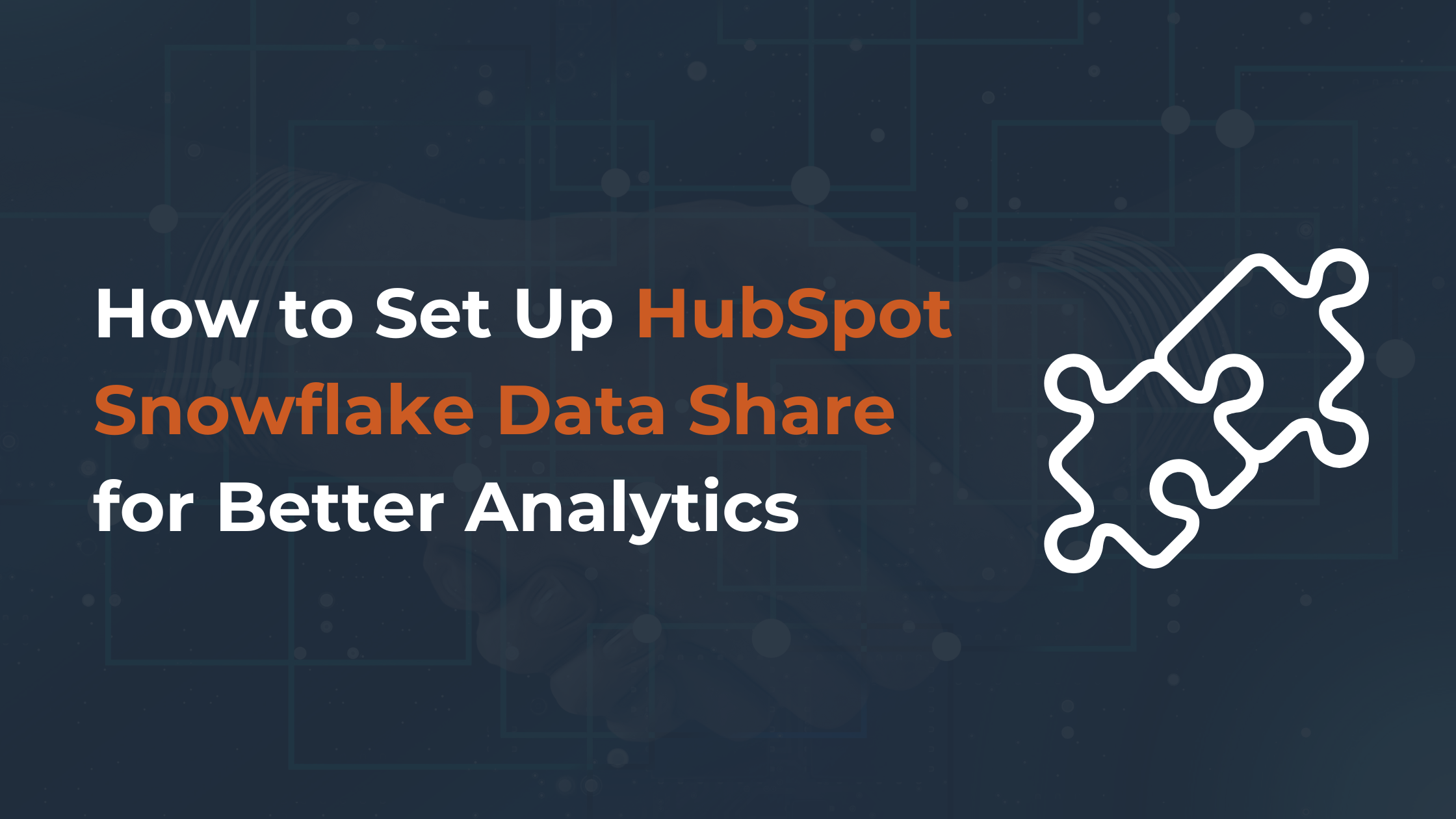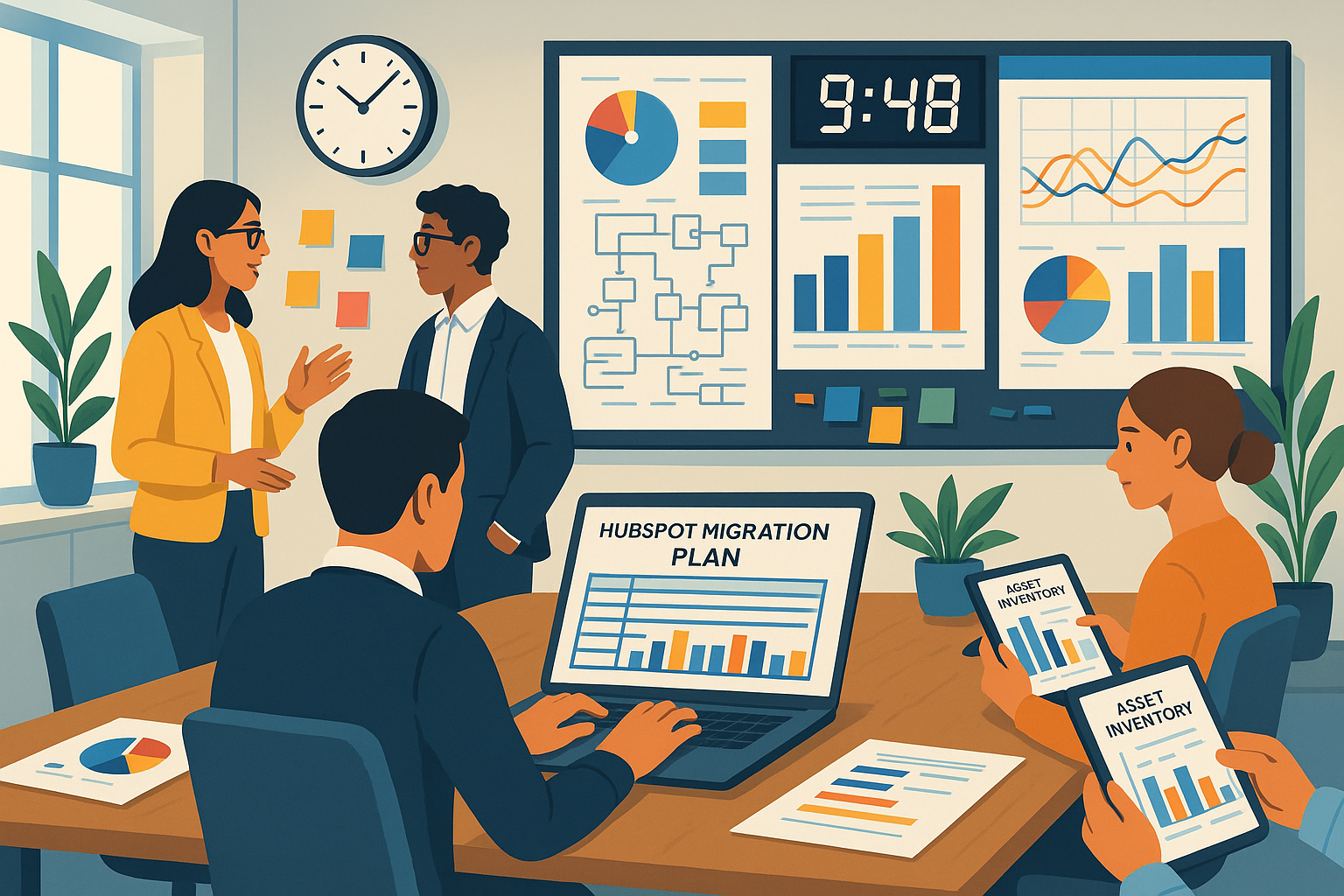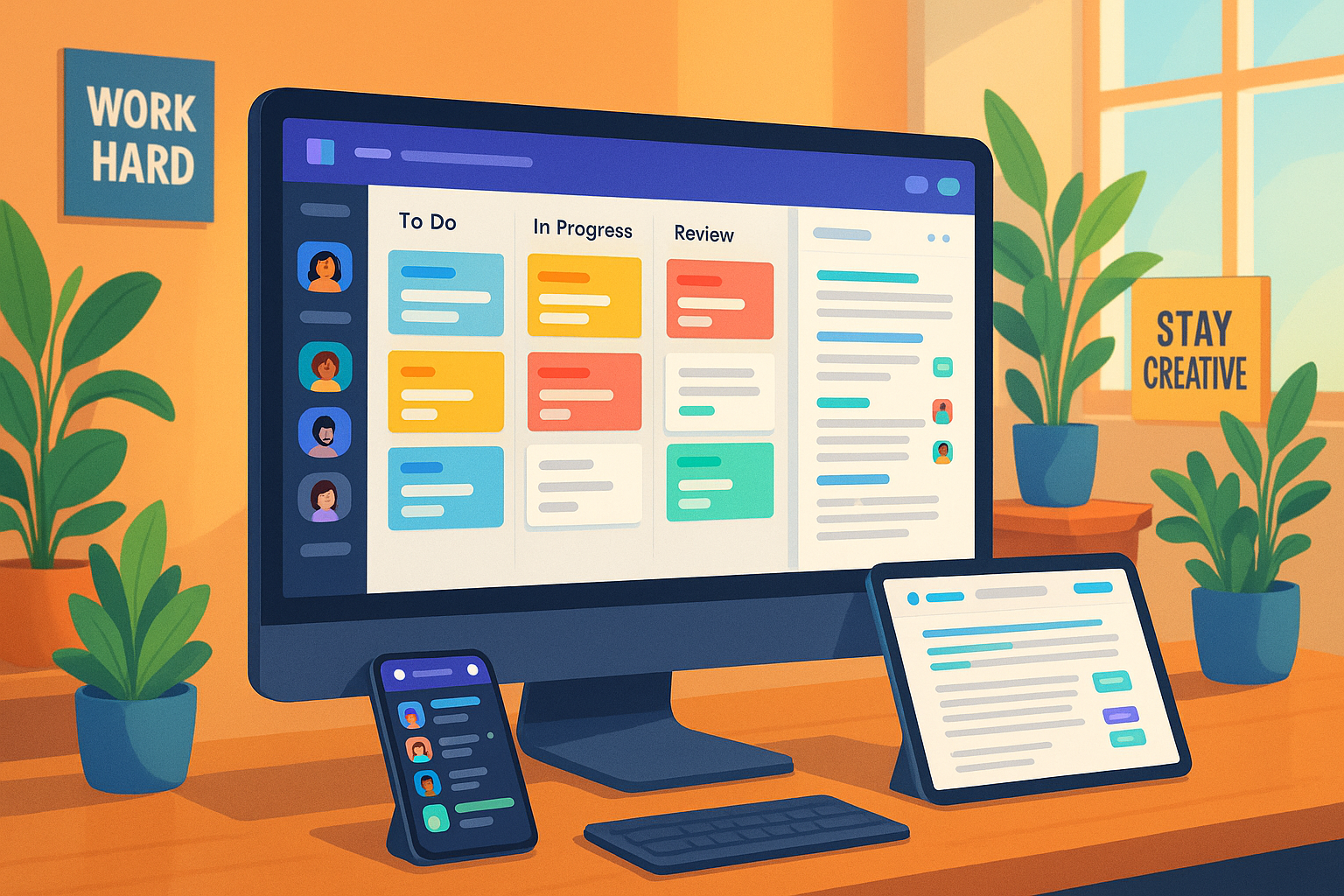Sharing HubSpot data with Snowflake can transform the way your teams operate, bringing real-time customer insights directly into your data warehouse for deeper analysis and smarter decisions. But doing it right requires more than just a basic sync.
Benefits of Using Data Share for Analytics:
- No Complex Pipelines: Access HubSpot data in Snowflake without building or maintaining ETL jobs.
- Real-Time Insights: Analyze both real-time and historical data directly in your warehouse.
- Faster Reporting: Streamlined access speeds up dashboards and analytics.
- Cross-Team Visibility: Align sales, marketing, and operations with a single source of truth.
- Secure & Compliant: Data sharing meets enterprise-grade security and compliance standards.
Keep reading to find out the difference between Data Share and Integration and how to manage HubSpot data in Snowflake with the best practices.
Table of Content
- What Is HubSpot Snowflake Data Share?
- What Is the Difference Between Data Share and Integration in HubSpot and Snowflake?
- Benefits of Using Data Share for Analytics
- Best Practices for Managing HubSpot Data in Snowflake
- Conclusion: Enhancing Analytics with HubSpot Snowflake Data Share
- Frequently Asked Questions
What Is HubSpot Snowflake Data Share?

HubSpot Snowflake Data Share is a direct data integration that allows you to access your HubSpot CRM data natively within your Snowflake environment. Put simply: HubSpot shares your CRM data directly with your Snowflake account, so you can analyze, model, and activate it alongside data from your other business systems in real-time.
For data teams, syncing HubSpot into Snowflake has traditionally meant managing custom pipelines, worrying about API limits, and troubleshooting schema changes. With Data Share, that complexity disappears. Using Snowflake Secure Data Sharing, HubSpot sends a read-only, constantly updated replica of your CRM data to your Snowflake instance.
What Is the Difference Between Data Share and Integration in HubSpot and Snowflake?
When connecting HubSpot and Snowflake, two terms often come up: Snowflake Data Share with HubSpot and Integration. While both aim to make HubSpot data available in Snowflake, the approaches, controls, and use cases behind each are different.
Data Share is a native feature built by HubSpot that uses Snowflake Secure Data Sharing. It gives you instant, read-only access to a live mirror of your HubSpot CRM data without extraction, loading, or ETL.
Key Characteristics:
- Zero-copy architecture – data stays in HubSpot’s Snowflake account, but is queryable from yours.
- Always up-to-date – near real-time sync with no manual refreshes.
- Read-only – not designed for writing back or modifying data.
- No engineering overhead – no pipelines to build or maintain.
Best For:
- Analytics, reporting, modeling.
- Teams that want quick access to CRM data without syncing logic.
By contrast, integration refers to ETL or ELT workflows that transfer data between HubSpot and Snowflake using connectors, APIs, or tools such as SyncMatters or custom scripts.
Key Characteristics:
- Custom ETL/ELT logic – you define which objects, fields, and frequency to sync.
- Full control – you can clean, enrich, or transform the data as needed.
- Bidirectional support – allows writing insights back into HubSpot.
- Storage cost – data is physically replicated into your Snowflake warehouse.
Best For:
- Use cases requiring data enrichment or transformation.
- Writing computed data back into HubSpot (reverse ETL).
- Connecting multiple CRMs or systems with tools like SyncMatters.
Snowflake Data Share with HubSpot is ideal when you require rapid, hassle-free access to HubSpot CRM for data analysis. But if you're building a broader data strategy or want to enrich, transform, or push data back — a full integration is the way to go.
At SyncMatters, we can help build smart integrations across multiple CRMs, e-commerce platforms, and data warehouses.
Benefits of Using Data Share for Analytics
If you're serious about turning CRM data into actionable insights, HubSpot Data Share with Snowflake is a game-changer. Here are the main benefits of HubSpot Data Share.
- No ETL Required: Access HubSpot data instantly in Snowflake without the need for manual extraction, transformation, or loading processes.
- Real-Time and Continuous Data Sync: Data is automatically kept up to date, ensuring analytics reflect the most current state of your CRM without delay.
- Single Source of Truth: Integrate HubSpot data with other company data in Snowflake to build a single analytics environment for sales, marketing, finance, and operations.
- Improved Data Accuracy: Eliminate data duplication and sync issues by using a shared, live dataset instead of separate data copies.
- Advanced Analytics and Machine Learning: Leverage Snowflake's scalable computing to run complex queries, predictive models, or AI workloads using rich HubSpot datasets.
- Reduced Engineering Overhead: Free up data engineering resources by eliminating custom pipelines, maintenance tasks, and API rate-limit workarounds.
Best Practices for Managing HubSpot Data in Snowflake

Effectively managing HubSpot data in Snowflake enables teams to run powerful analytics, drive data-informed decisions, and reduce operational complexity. Below are best practices organized by key stages of setup and ongoing usage.
Prerequisites and Requirements
You must meet a few conditions before using Snowflake Data Share with HubSpot. You must have a HubSpot Enterprise-tier subscription, as the data share feature is only available at this level. Your Snowflake account should be accessible in a compatible region, typically AWS US East, for HubSpot’s data sharing. Administrative privileges or appropriate roles in Snowflake are required to create and manage shared databases. It’s also important to establish a clear data governance policy upfront, defining who can access the data and how it will be used across your organization.
Setting Up the Data Share Connection
Setting up the connection involves both HubSpot and Snowflake configurations. Start by enabling the Data Share within HubSpot’s settings under Data Management. Once activated, log in to your Snowflake account and use SQL commands to accept the data share and create a new database instance from it. Be sure to name the shared database clearly and consistently, aligning it with your internal naming conventions. Consider using dedicated roles or virtual warehouses to access data, maintaining a secure and organized analytics environment.
Exploring Available HubSpot Data in Snowflake
After the share is established, explore the datasets now available within your Snowflake environment. HubSpot provides access to structured tables that represent CRM entities like customer data, deals, emails, and workflows. Use Snowflake's metadata tools or SQL queries to list and understand available tables and schemas. Since HubSpot uses object IDs to establish relationships between entities, it’s helpful to document how different datasets connect to support joint operations and build comprehensive analytics models.
Ensuring Data Security and Compliance
Managing sensitive CRM data requires a focus on security and regulatory compliance. Use Snowflake's security capabilities, such as row- and column-level access controls, to prevent unauthorized access to personal or confidential information. Use audit logs to track who is accessing the data and when, ensuring accountability across teams. Snowflake encrypts data both in transit and at rest, but you should also assess whether additional masking or tokenization is needed for compliance with regulations like GDPR or CCPA. Maintaining secure access policies and adhering to consent practices is crucial when working with HubSpot contact data.
Monitoring Data Updates and Performance
To keep your data pipeline healthy and efficient, actively check how HubSpot data is synced and used in Snowflake. HubSpot typically updates the shared data daily, so confirm that the refresh schedule aligns with your reporting needs. Use Snowflake’s performance tools to monitor query efficiency and identify any slow-running or resource-heavy queries. Storage usage should also be tracked, particularly when joining HubSpot data with large internal datasets. Be vigilant about schema changes that HubSpot may introduce, and consider setting up alerts to automatically detect these changes.
Leveraging HubSpot Data in Snowflake for Analytics
Once the data is integrated, use its full value by applying it to advanced analytics use cases. Start by joining HubSpot data with other sources, such as e-commerce transactions, support tickets, or financial data, to build a complete customer view. From there, you can create dashboards that track marketing campaign effectiveness, sales funnel metrics, or customer lifecycle performance. Use Snowflake as the backend for attribution modeling, churn prediction, and lead scoring, or integrate the data into machine learning pipelines for more sophisticated analysis.
Conclusion: Enhancing Analytics with HubSpot Snowflake Data Share

Integrating Snowflake Data Share with HubSpot significantly transforms how organizations manage and analyze their CRM data. By eliminating the need for traditional ETL pipelines, businesses gain instant, secure, and continuous access to rich HubSpot datasets.
From improved collaboration between marketing, sales, and data teams to the ability to power advanced analytics and machine learning models, the benefits of this integration are wide-reaching. Teams can build unified dashboards, automate reporting, and uncover trends that would be difficult to detect within HubSpot alone.
To further simplify and scale the data integration process, platforms like SyncMatters play a critical role. SyncMatters integrates HubSpot with Snowflake and other modern data warehouses, allowing for safe, scalable, and recurrent data syncs.
The most robust middleware on the market with connectors to all HubSpot API’s is the SyncMatters middleware platform for many reasons.
- SyncMatters has been building integrations with HubSpot for a decade now, having the most experience and the most connections to all HubSpot API objects making most use cases very possible.
- SyncMatters has 75 connectors built for bi-directional syncing with workflows, customizations, data transformation, if/then criteria to trigger or throttle data. These connectors mostly are comprised of the most used systems that need syncing with HubSpot (ERPs, Project based softwares, databases, etc.)
- The SyncMatters platform is an iPaaS solution, meaning it is intelligent. When a software updates the APIs or a customer needs to change a property/field, it updates automatically and has no consequence for any of their customers.
- The SyncMatters platform and company is ISO certified and has to follow GDPR policies because of the work they do with global or European companies, giving their North American companies more strict data processing regulations to follow.
- Last but not least, and might even be the most important. The SyncMatters team does not just hand over their product and you are on your own. SyncMatters integrations come with heavy consult around ultimate business goals, strategy to build the most efficient integration with knowledge of how the systems operate, which most integrators or iPaaS companies do not have. This benefits their customers greatly to avoid implementation pain and trial/error configuration.
“Everyone in our organization is so happy”
“I’ve been so impressed. This experience has been so smooth. Milestones were reached when they were supposed to be and communication throughout was clear. We absolutely got what we were looking for which is impressive since our original experience with another provider cost us over $100,000 and it didn’t even work. SyncMatters came in and a month and a half later we have accurate data between two systems, totally pulled it off. Everyone in our organization is so happy. SyncMatters is life savers!”
Daniel Akinmolayan
- SQFI
In summary, leveraging HubSpot Snowflake Data Share, especially when combined with an integration platform like SyncMatters, enables companies to move faster, act smarter, and maximize the value of their CRM data in a governed, cost-efficient manner.
Frequently Asked Questions
How Often Is HubSpot Data Updated in Snowflake?
HubSpot updates data in Snowflake every 24 hours. The update typically occurs during off-peak hours to minimize disruption and maintain relevant data for daily reporting and analytics.
Is There Any Cost Associated with Data Sharing?
HubSpot does not charge an additional fee for enabling Snowflake Data Share. However, standard Snowflake costs apply, including charges for data storage, computing (queries), and any downstream usage of the shared data within your Snowflake environment.
Can I Customize the Data Shared from HubSpot?
Currently, the HubSpot Snowflake Data Share offers a fixed schema with a standard set of objects and fields. You cannot customize which data is shared.
How Secure Is HubSpot Data Sharing Through Snowflake?
HubSpot's data sharing with Snowflake is designed to be secure. The data is never copied or moved — instead, it is shared directly using Snowflake’s native sharing feature. All data is encrypted in transit and at rest, and access can be tightly controlled with Snowflake’s built-in security features like role-based access control, masking policies, and audit logs.
What Types of HubSpot Objects Are Included in the Snowflake Data Share?
The shared dataset includes a wide range of HubSpot CRM objects such as contacts, records, deals, tickets, events, owners, custom properties, and workflows.




